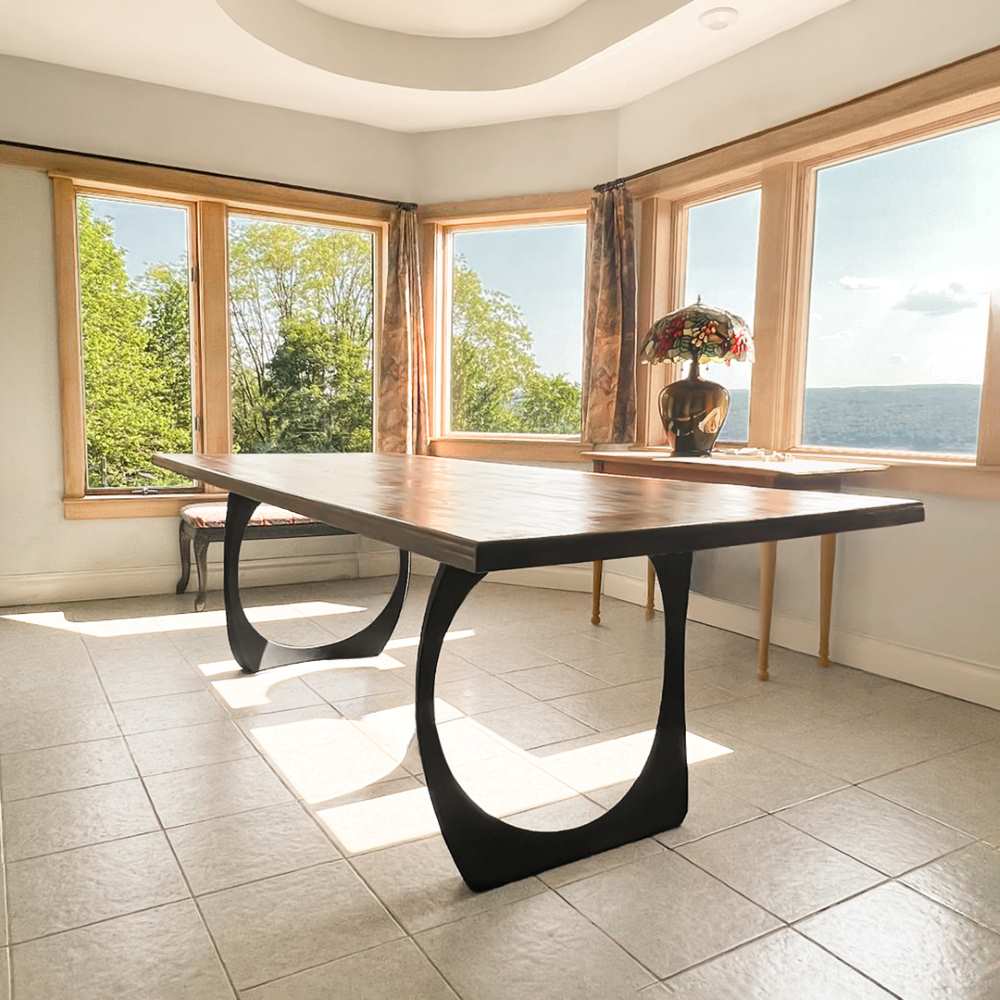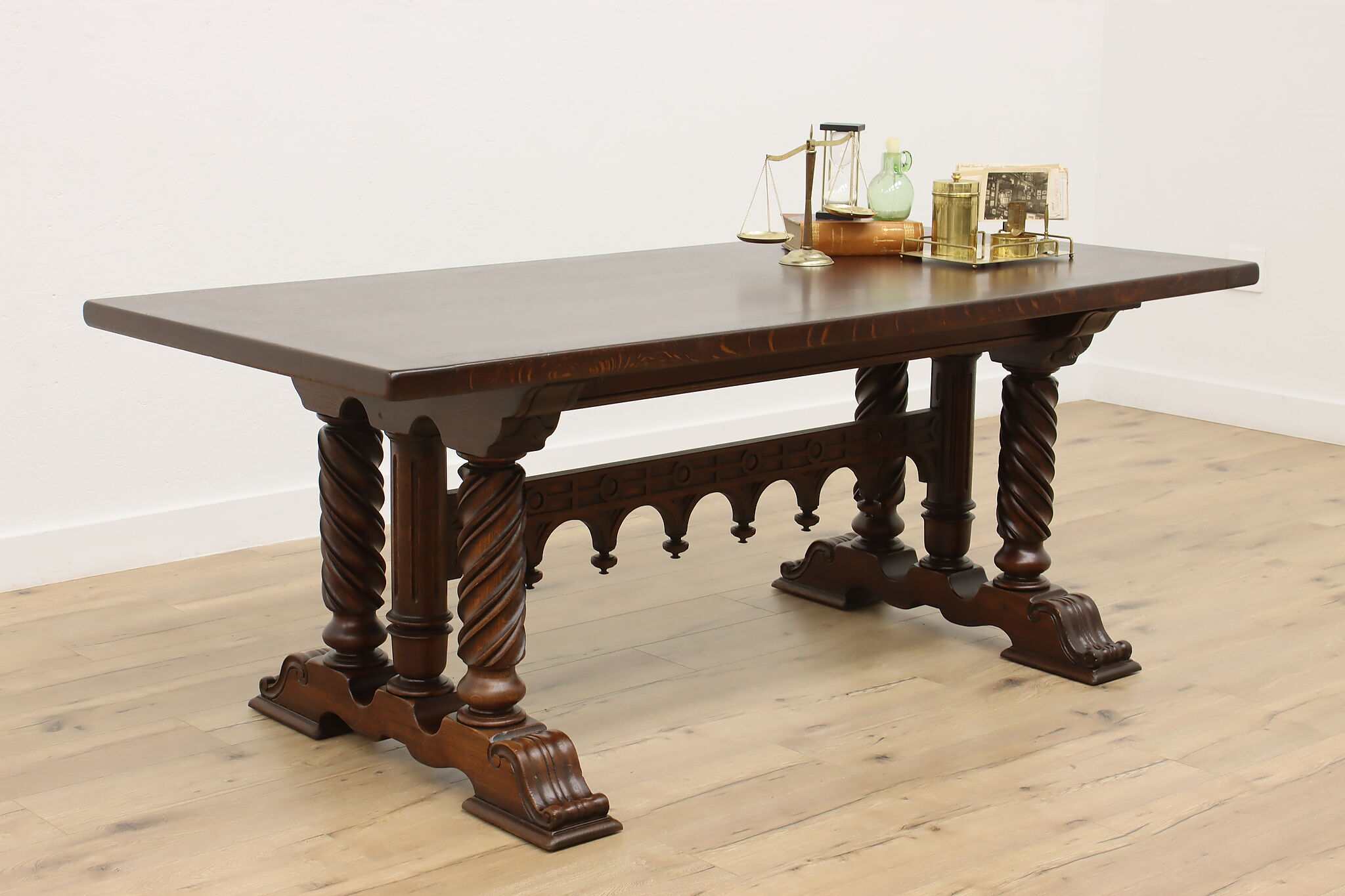The Best Materials for Durable and Elegant Dining Room Table Legs
The Best Materials for Durable and Elegant Dining Room Table Legs
Blog Article
From Standard to Modern: Locate the Perfect Dining Space Table Legs for Your Style
The choice of dining-room table legs plays an essential function in specifying the overall character of your area, bridging the gap in between conventional craftsmanship and modern-day visual appeals. While traditional designs such as cabriole and turned legs stimulate a sense of classic elegance, contemporary designs like barrette and geometric alternatives offer a possibility for striking visual passion. Assessing the ideal balance between these designs needs a nuanced understanding of your existing design and individual taste. As you take into consideration these components, the inquiry remains: just how can you perfectly integrate these varied leg styles to produce a harmonious dining experience?
Understanding Table Leg Styles
The variety of dining-room table leg styles can considerably affect both the appearances and capability of the room. Each leg design contributes one-of-a-kind practical features and visual elements, satisfying varied design preferences and usage demands. Comprehending these styles is important for selecting the best table that aligns with your total indoor style vision.
For circumstances, tapered legs supply a tidy, traditional look that can boost a space's beauty, while pedestal bases give stability and take full advantage of legroom, making them excellent for smaller sized areas. Barrette legs, a trademark of mid-century modern style, introduce a commercial panache, enabling a ventilated, open feel. Trestle legs evoke rustic appeal, offering durable support and a feeling of eternity.
Wood legs can bring warmth and structure, whereas metal options typically convey a smooth, contemporary ambiance. Eventually, understanding table leg styles is crucial for creating a cohesive dining area that reflects personal style while making certain practicality and comfort.
Conventional Table Leg Options
When choosing eating space table legs, traditional choices commonly embody classic style and craftsmanship. These designs mirror a rich heritage and a commitment to top quality, making them suitable for those that value classic visual appeals.
Among one of the most legendary traditional leg styles is the cabriole leg, defined by its graceful curved shape. This design frequently features decorative carvings and is most typically found in Queen Anne and Chippendale furniture. Another preferred alternative is the transformed leg, which flaunts a collection of smooth, rounded shapes that provide a traditional look while maintaining stability.
Moreover, the straight leg, while easy, supplies a unadorned and durable framework that can mix flawlessly with a range of tabletop styles. For those attracted to ornate detailing, claw-and-ball feet legs evoke a sense of majesty and can offer as a magnificent centerpiece in any kind of eating area.
Lastly, stand bases, although not purely legs, offer an alternative traditional alternative that permits adequate legroom and can be beautifully sculpted. Each of these conventional leg designs contributes to the general atmosphere of a dining-room, marrying feature with visual allure.

Modern Table Leg Styles
Modern table leg designs use a varied series of styles that highlight clean lines and ingenious materials. These layouts commonly prioritize functionality while acting as striking focal factors within an eating area. Minimal aesthetic appeals are widespread, with legs crafted from products such as metal, glass, and engineered timber, which add to a contemporary and airy feeling.
One popular style is the barrette leg, characterized by its slender, conical framework that provides stability without frustrating the table top (dining room table legs). This style is commonly located in mid-century modern furniture and can easily enhance different table forms. Another trend is the usage of geometric forms, where legs might handle angular or unbalanced kinds, adding visual rate of interest and a touch of virtuosity

Blending Styles for Distinct Rooms
Often, homeowners look for to develop special dining areas that reflect their personal design find out here by blending various layout components. This approach enables the unification of varied looks, leading to a harmonious yet distinct atmosphere. Coupling a rustic wood table with sleek, modern-day metal legs can create an appealing contrast that boosts the space's total charm.
Additionally, incorporating vintage table legs with contemporary tabletops can stimulate a sense of background while preserving a modern-day sensibility. Such mixes not only display individual preference however likewise motivate creative thinking, enabling homeowners to curate an area that feels both personal and inviting.
Shade plays a critical role in this mixing procedure; choosing table like it legs that enhance or contrast with the existing color system can enhance visual passion. For instance, whitewashed legs can soften the daring of a dark table surface, producing a well balanced aesthetic.
Tips for Choosing the Right Legs
Choosing the right table legs is essential for achieving both capability and visual charm in your dining room. Begin by taking into consideration the general design of your area. Conventional setups profit from legs that include intricate carvings or turned styles, while modern rooms might call for sleek, try this website minimalist styles.
Next, analyze the elevation and security of the legs. dining room table legs. Basic dining tables range between 28 to 30 inches in elevation, so make sure the legs enhance this dimension for convenience. In addition, durable materials, such as wood or metal, can enhance stability and longevity
Assess the leg shape too-- choices consist of directly, tapered, or pedestal styles. Straight legs provide a traditional look, while tapered legs can add a touch of elegance. Pedestal bases provide sufficient legroom and are perfect for smaller areas.
Final Thought
In recap, selecting the perfect dining room table legs needs careful factor to consider of both standard and modern styles. By integrating leg style, elevation, and material with the total décor, a cohesive and welcoming environment can be attained.
The range of eating space table leg designs can substantially influence both the aesthetics and capability of the space. Inevitably, comprehending table leg styles is essential for producing a cohesive dining location that mirrors individual style while making sure usefulness and comfort.One of the most legendary conventional leg styles is the cabriole leg, defined by its stylish rounded form. Straight legs offer a traditional appearance, while tapered legs can add a touch of sophistication.In summary, picking the perfect dining area table legs requires cautious consideration of both conventional and modern-day designs.
Report this page